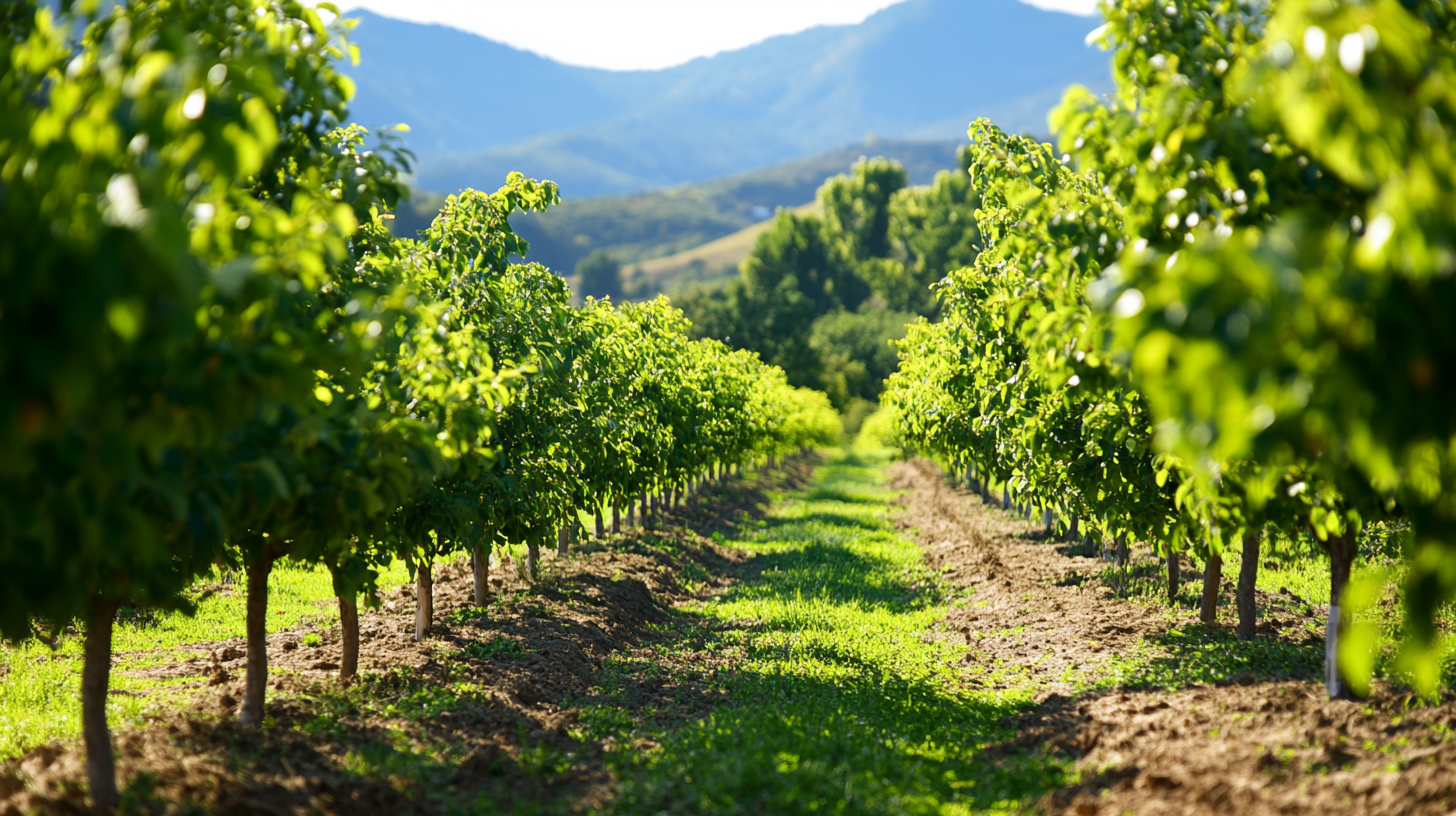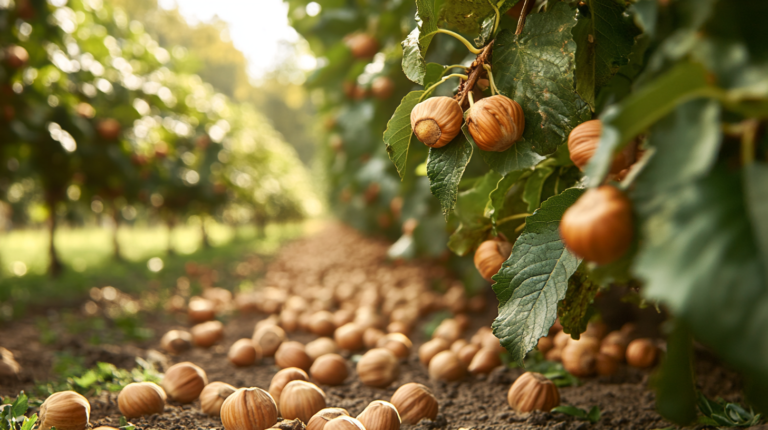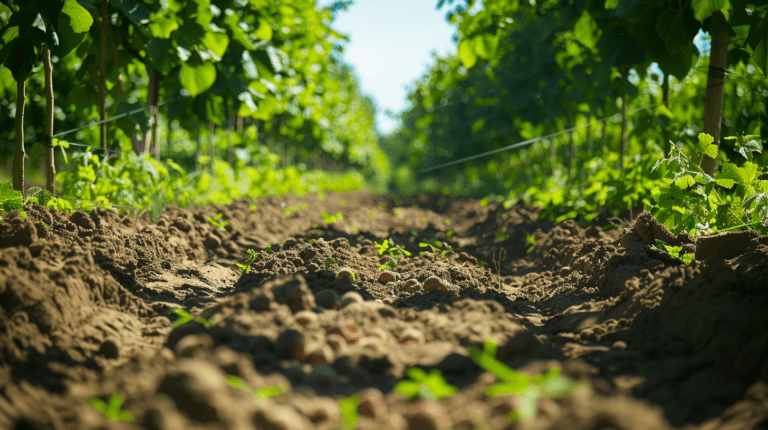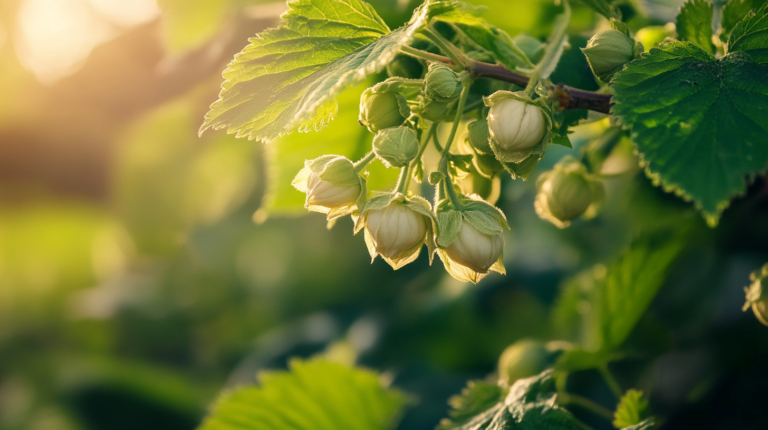Adapting Hazelnut Orchards to Climate Change: Strategies for Resilience
Adapting Hazelnut Orchards to Climate ChangeClimate change poses significant challenges for hazelnut cultivation worldwide, necessitating adaptive strategies to ensure the continued viability and productivity of orchards. As a perennial tree crop with a lifespan of several decades, hazelnuts are particularly vulnerable to long-term shifts in climate patterns. This comprehensive overview will explore the impacts of climate change on hazelnut production and outline various adaptation strategies for growers.
Climate Change Impacts on Hazelnut Production
Hazelnut trees require moderate climatic conditions for optimal growth and yield. For more information on ideal climate conditions for hazelnuts, check out our guide on Climate Requirements for Thriving Hazelnut Trees. However, climate change is altering these conditions in many hazelnut-growing regions, presenting several challenges:
– Temperature Changes
Rising temperatures can have both positive and negative effects on hazelnut production:
- Earlier bloom and bud break: Warmer winter temperatures may cause premature blooming, making the trees more susceptible to late spring frosts.
- Reduced chilling hours: Hazelnuts require a certain number of cold hours during winter dormancy. Warmer winters may not provide sufficient chilling, affecting bud break and overall tree health.
- Heat stress: Extreme summer temperatures can lead to reduced photosynthesis, impaired pollination, and smaller kernel size.
– Water Availability
Changes in precipitation patterns and increased evapotranspiration due to higher temperatures can impact water availability:
- Drought stress: Extended dry periods can reduce yields and affect nut quality.
- Flooding: Excessive rainfall or extreme precipitation events can lead to waterlogged soils, potentially damaging root systems.
– Pest and Disease Pressure
Altered climate conditions may influence the prevalence and distribution of pests and diseases:
- New pest species: Warmer temperatures may allow new insect pests to expand their range into hazelnut-growing regions.
- Increased disease incidence: Changes in humidity and temperature can create more favorable conditions for fungal diseases like eastern filbert blight.
– Extreme Weather Events
Climate change is associated with an increase in the frequency and intensity of extreme weather events:
- Storms and high winds: These can cause physical damage to trees and lead to nut drop before harvest.
- Hail and heavy rain: Such events can damage developing nuts and increase the risk of fungal infections.
Adaptation Strategies for Hazelnut Orchards
To address these challenges, hazelnut growers can implement various adaptation strategies:
– Site Selection and Orchard Design
Careful consideration of planting sites can help mitigate some climate-related risks:
- Avoid south-facing slopes: In regions prone to frost damage, planting on north-facing slopes can reduce the risk of early bloom due to warm winter days.
- Improve drainage: Choose sites with good soil drainage to minimize the impact of heavy rainfall events.
- Windbreaks: Establish windbreaks around orchards to protect trees from strong winds and reduce evapotranspiration.
– Varietal Selection
Developing and planting climate-resilient hazelnut varieties is crucial for long-term adaptation:
- Heat-tolerant cultivars: Select varieties that can withstand higher temperatures and have lower chilling requirements.
- Disease-resistant varieties: Plant cultivars with improved resistance to prevalent diseases in the region.
- Diversification: Grow multiple varieties with different climate tolerances to spread risk.
– Water Management
Efficient water use is essential for adapting to changing precipitation patterns:

- Drip irrigation: Install drip irrigation systems to improve water use efficiency and reduce water stress during dry periods.
- Soil moisture monitoring: Use soil moisture sensors to optimize irrigation scheduling.
- Water harvesting: Implement rainwater harvesting techniques to capture and store water for use during dry spells.
– Soil Management
Improving soil health can enhance the resilience of hazelnut trees. o learn more about optimizing soil conditions for hazelnuts, visit our guide on The Best Soil Types for Growing Hazelnuts:
- Cover cropping: Plant cover crops between tree rows to reduce soil erosion, improve water infiltration, and enhance soil organic matter.
- Mulching: Apply organic mulch around trees to conserve soil moisture and regulate soil temperature.
- Reduced tillage: Minimize soil disturbance to preserve soil structure and organic matter.
– Integrated Pest Management (IPM)
Adapting pest management strategies to changing conditions is crucial:
- Monitoring: Regularly scout for new and existing pests and diseases to detect problems early.
- Biological control: Encourage natural predators and use biopesticides when possible.
- Cultural practices: Implement pruning and orchard sanitation practices to reduce pest and disease pressure.
– Tree Training and Pruning
Proper tree structure can improve resilience to extreme weather events:
- Strong tree structure: Train young trees to develop a strong central leader and well-spaced scaffold branches.
- Regular pruning: Maintain an open canopy to improve air circulation and reduce disease pressure.
– Harvest Management
Adapting harvest practices can help mitigate the impacts of climate change:
- Timing adjustments: Be prepared to adjust harvest timing based on earlier maturation due to warmer temperatures.
- Mechanization: Invest in efficient harvesting equipment to quickly gather nuts before potential weather events.
– Diversification and Value-Added Products
Reducing reliance on a single crop can improve overall farm resilience:
- Intercropping: Consider planting compatible crops between hazelnut rows to diversify income streams.
- Value-added products: Develop processed hazelnut products to increase market options and potentially offset yield losses.
Research and Technology
Ongoing research and technological advancements play a crucial role in adapting hazelnut production to climate change:
– Climate Modeling
Improved climate models can help growers make informed decisions:
- Regional projections: Develop high-resolution climate projections specific to hazelnut-growing regions.
- Phenology models: Create models that predict how climate change will affect hazelnut tree phenology and yield.
– Precision Agriculture
Adopting precision agriculture techniques can optimize resource use and improve adaptation:
- Remote sensing: Use satellite and drone imagery to monitor crop health and stress levels.
- Decision support systems: Develop tools that integrate climate data, soil conditions, and crop models to guide management decisions.
– Genetic Research
Advancing genetic research can lead to more resilient hazelnut varieties:
- Marker-assisted breeding: Identify genetic markers associated with climate resilience traits to accelerate breeding programs.
- Gene editing: Explore the potential of gene editing technologies to develop climate-adapted hazelnut varieties.
Policy and Industry Support
Effective adaptation requires support from policymakers and industry stakeholders:
> Government Programs
- Research funding: Increase funding for climate change adaptation research in hazelnut production.
- Incentive programs: Develop programs that incentivize growers to adopt climate-smart practices.
> Industry Collaboration
- Knowledge sharing: Establish platforms for growers to share experiences and best practices for climate adaptation.
- Supply chain resilience: Work with processors and retailers to develop more flexible supply chains that can accommodate climate-related yield fluctuations.
Conclusion
Adapting hazelnut orchards to climate change requires a multifaceted approach that combines improved agronomic practices, technological innovations, and supportive policies. By implementing these strategies, hazelnut growers can enhance the resilience of their orchards and ensure the long-term sustainability of hazelnut production in the face of changing climatic conditions. As the effects of climate change continue to unfold, ongoing research and collaboration within the industry will be crucial for developing and refining adaptation strategies tailored to specific regions and production systems.
Sources:
[1] https://repositorio.utad.pt/server/api/core/bitstreams/5c7e5890-2a8c-4419-85e6-01dad163c266/content
[2] https://www.climatehubs.usda.gov/hubs/northwest/topic/climate-resilient-hazelnuts-oregon-and-washington
[3] https://www.sciencedirect.com/science/article/abs/pii/S0308521X2030843X
[4] https://agclimate.net/check-it-out-ensuring-that-hazelnuts-in-oregon-and-washington-stay-resilient/
[5] https://www.agbi.com/agriculture/2024/08/turkeys-hazelnut-growers-climate-fears/
[6] https://www.rainforest-alliance.org/resource-item/climate-change-and-hazelnut-production/
[7] https://www.sciencedirect.com/science/article/abs/pii/S0167880922001049
[8] https://www.adb.org/sites/default/files/project-documents/49280/49280-001-tcr-en.pdf






